Reasons for their appearance
Gnats do not appear on their own in indoor flowers, usually their appearance is caused by one of 5 reasons:
- Infected soil. The most common reason is the use of purchased soil, which already contains eggs or larvae. It is impossible to see them when you open the package, but when you replant the plant and start watering it, the larvae will degenerate into flying adults and the problem will become obvious.
- Overwatering of an indoor plant. Just like a lack of water, its excess will not lead to anything good: stagnant liquid is an excellent environment for the development of pests.
- Lack of mosquito nets. In the summer season, small insects can get into the apartment directly through the window, this is especially true for residents of the first floors.
- Improper storage of vegetables and fruits. Midges can migrate to flowerpots from infected products: therefore, when bringing home a bag of vegetables or fruits from the store, be sure to wash them with soap and do not store spoiled fruits to avoid the reproduction of fruit flies.
- Organic fertilizers. Watering plants with an infusion of coffee, tea, bone broth, banana peel, onion peel makes the flower soil an ideal space for the life and reproduction of pests.
How to get rid of midges?
It is important to approach this problem in a comprehensive manner. Otherwise, you can only get rid of the midges temporarily.
- Let’s start with the fact that it is better to isolate the pot with the infected indoor flower immediately after detecting midges or larvae.
- The second step is to remove adult flies using special traps or a vacuum cleaner.
- And the last step involves cultivating the soil. For this, I have made a selection of the most effective methods – folk and professional. Choose what is more convenient for you.
How to remove adults?
The main task is to catch all the insects and any methods will do here, but I will tell you about the most effective ones.
- A sticky tape trap is a classic way to combat flies. Take a small piece of tape or paper coated with honey or syrup and place it in the pot with the affected flower. In a couple of days there will be no parasites left. Just don’t forget to change it as it fills up.
- You can also use a vacuum cleaner. Just be careful not to damage the flowers.
Watch more examples of traps on video:
Replanting a plant
If you don’t want to deal with midges, you can replant the flower in another pot. This method is also suitable in advanced situations, when there are a lot of midges and larvae.
Before replanting, be sure to check the relevance of this method – some indoor flowers may not tolerate it.
- First, remove adult midges from the surface of the flowers;
- Prepare new and disinfected soil;
- Carefully remove the plant and remove the remains of the old infected soil;
- After this, carefully rinse the roots under running water (room temperature) and dip them in a solution with a disinfectant;
- Thoroughly rinse the old pot and disinfect it using any known method;
- Mix the substrate with a suitable fertilizer and place our flower.
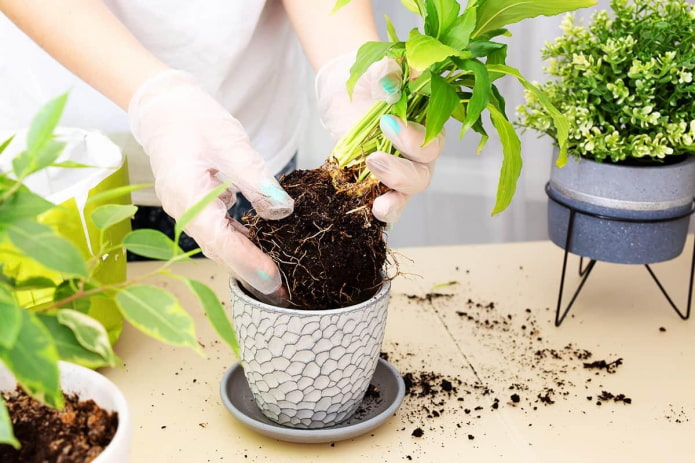
Folk methods of control
To get rid of flies, you should understand: flying individuals are only half the problem. If you do not treat the soil, the problem will disappear for a while, but after a short period it will return again, because the larvae remain in the pots.
Therefore, you need to hit on two fronts at once – if you do not want to resort to serious chemicals, try starting with folk remedies.
Drying out the soil
The easiest way, which follows from the reasons, is to arrange a small drought. For most larvae, this will be enough. But there is a catch in that for some indoor plants this can be destructive. Although succulents will easily endure even a severe drought.
If your flower can tolerate this, then it is enough to dry the soil by 2-3 cm.
Garlic
All flies cannot stand strong odors, so a head of garlic is an excellent weapon against them.
- Prepare a solution: take 3 crushed cloves of garlic for 1 liter of warm water. Mix, put in a dark place for 12-24 hours.
- Then strain, pour into a spray bottle and spray the plant itself, and also water the soil.
Repeat every 7 days for a month.
Hydrogen peroxide
Peroxide is not only an excellent antiseptic, but also an insecticide. It does not harm the plant, but kills all forms of insect life: therefore, using it to fight midges is not only safe, but also effective.
So, when midges have appeared in indoor flowers, take 500 ml of water and 15 ml (1 tablespoon) of peroxide. Mix well: spray the stems and leaves of the plant, as well as the soil in which the midges breed.
Matches
The easiest way without mixing and spraying is ordinary sulfur. Take several matches (you can stick from 5 to 15 pieces into an average pot), insert them with the heads down, water as usual. In damp soil, sulfur will dissolve and kill all eggs, larvae, and pupae.
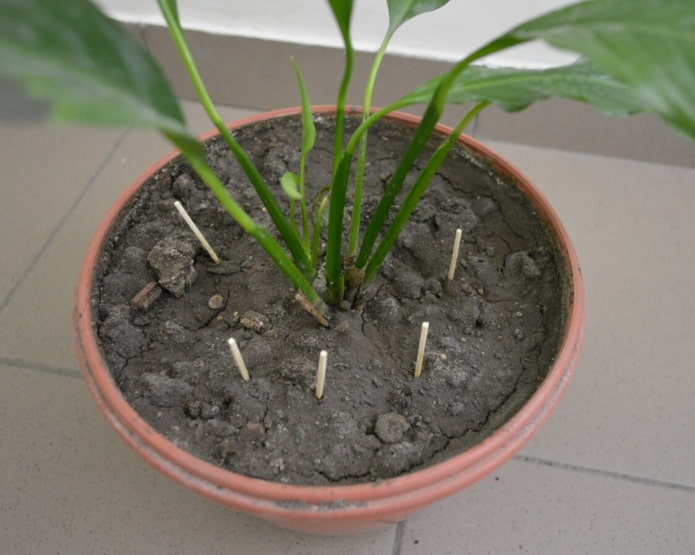
Potassium permanganate
Treatment with a weak solution of manganese is not so much an insecticide as a disinfectant. Be sure to use it when overwatering a houseplant: potassium permanganate will destroy not only midge eggs, but also fungal spores on the roots, and will not allow the flower to die.
Laundry soap
Often the first thing on the list of household measures is “Treat with a soap solution” and this is not without reason: laundry soap kills germs, fights diseases and pests well. To get rid of emerging adults and developing individuals, grind 1 part of laundry soap on a grater or with a knife, pour 6 parts of boiling water.
When the soap has dissolved, you need to use a spray bottle to treat the above-ground part of the plant and wrap it in a bag: leave the pot alone for a night or a day, then rinse it in the shower. Repeat the procedure in a week.
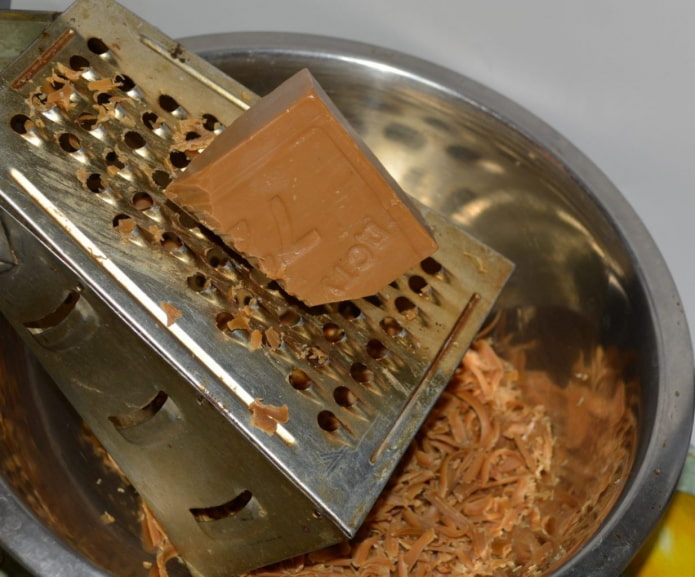
Black pepper
This method is even easier to implement than the matchstick option, because spices are available in almost every kitchen, and finding matches in a kitchen cabinet is the exception rather than the rule.
To get rid of annoying midges, simply sprinkle pepper on the top layer of soil: it will saturate the soil with each watering and destroy all life in the soil.
Citrus fruits
The latter option will help get rid of midges and aromatize the air in the room at the same time. Cut the peel of an orange, lemon, grapefruit or any other citrus fruit, put it on top in a flower pot: a remedy against any pests is ready! The bright smell of the fruit repels adult flies and prevents their reproduction.
Professional remedies for midges
You can also poison midges in flower pots with professional products: this method is more reliable and faster.
Aerosol
A sprayer or spray is the easiest option for solving the problem of flying midges. This method is perfect if the insects appear from the street and have not yet had time to lay eggs.
Any insecticide spray is suitable for combating winged pests – Dichlorvos, Raid, Reftamide, Raptor, Clean House. Just spray it in a closed room, wait about an hour, open the windows and wait for complete ventilation. Then all that remains is to collect the insect corpses from the windowsill, floor and all horizontal surfaces with a rag or vacuum cleaner.
Important! The damage caused by insecticides to flowers can be fatal: therefore, if there are many plants in the room, look for other options for getting rid of them.
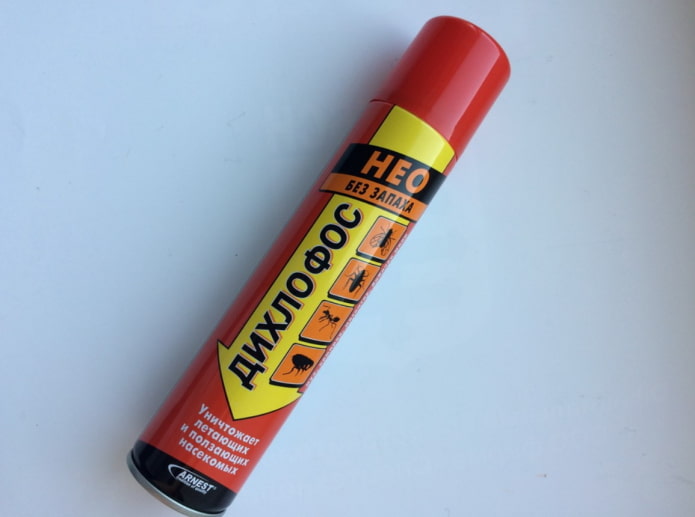
Granules
Dry granules in the volume described on the package are scattered on top or added to the soil when planting: in damp soil they will decompose, creating a protective barrier against midges and other pests.
Effective means: Mukhoed, Grom, Grom-2.
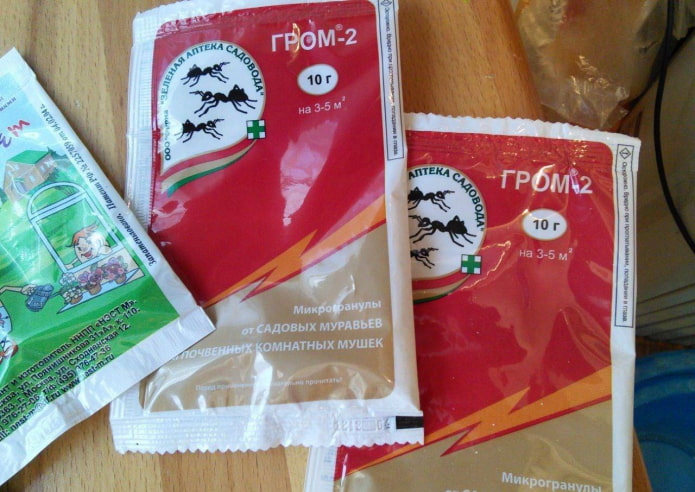
Powder for dilution
Universal powders for the preparation of suspensions (Fitoverm, Aktara) help to get rid not only of winged flies, but also of any other types of insects. They are diluted in water at room temperature according to the instructions and used for watering or spraying plants.
There should be no midges left in flower pots after the first treatment.
Features of control by type
Above, we described universal methods, but if you are overcome by midges of a specific type, it is better to know the most effective methods of control of each of them.
Check out a selection of working methods of control of moths.
White midges
The so-called whiteflies are most often found on indoor plants: small aphids devour the flower itself, so if you do not want to lose it, you need to start fighting pests immediately.
The main task is to create conditions in which whiteflies will simply have nowhere to hide. If this is not done, the aphids will temporarily fly away, and then return to the plant again. Therefore, when white midges are detected, all nearby plants, glass and window sills should be treated with an insecticide. And the main infected flower should be wrapped in polyethylene after spraying.
The most effective remedies for whiteflies are: soap, garlic, cinnamon. And also aerosols like Raid or Dichlorvos.
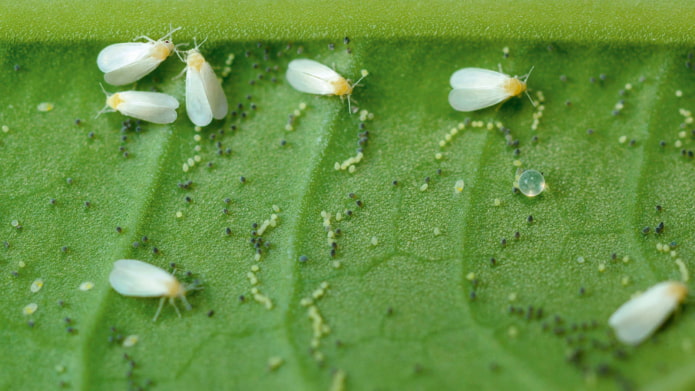
Black midges
Sciarids or fungus gnats are small dipterous insects. The body length of adults reaches only 1.5 mm. Adults are not dangerous for people and plants, but small larvae living in the soil love to feast on the roots of indoor flowers, causing their death.
The main task when getting rid of sciarids is to dry the soil. Wet soil is ideal for their development, so try not to overwater the plant.
Soap, garlic, sulfur, and charcoal can kill them. Granules such as Grom-2 or sprayers Fitoverm, Aktara are also effective.
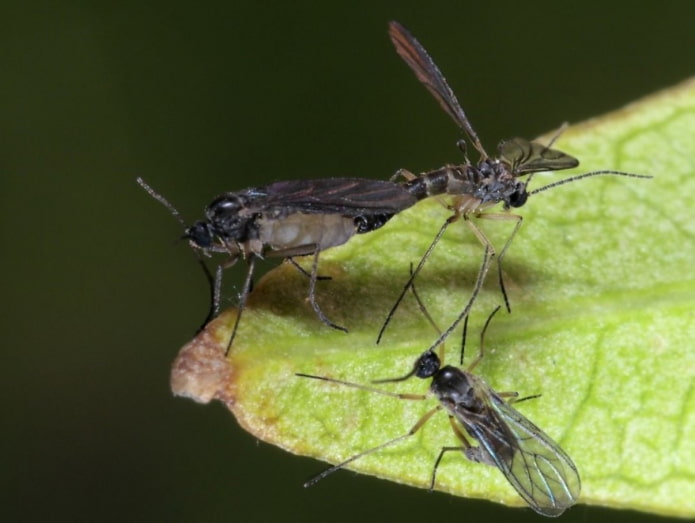
Drosophila
Fruit flies do not harm plants, but they irritate people. To remove flying insects from sight, set traps with sweets or hang up sticky tape. You can also collect them with a vacuum cleaner or poison them with an aerosol.
For prevention, the soil in the pots should be watered with a solution of hydrogen peroxide or laundry soap. Mukhoed granules will also work.

Prevention of occurrence
Preventing a problem is always easier than fighting it. To prevent annoying flies from appearing in your potted plants, follow these simple rules:
- Keep your apartment clean. Take out the trash regularly, get rid of spoiled food, wash your pets’ bowls.
- Treat the soil before planting. Calcine it or pour light pink potassium permanganate.
- Adjust watering. Do not overwater the soil – this is harmful, including for the flowers themselves.
- Use only special purchased fertilizers, refuse organic matter.
- Regularly ventilate the apartment.
- Install mosquito nets on the windows.
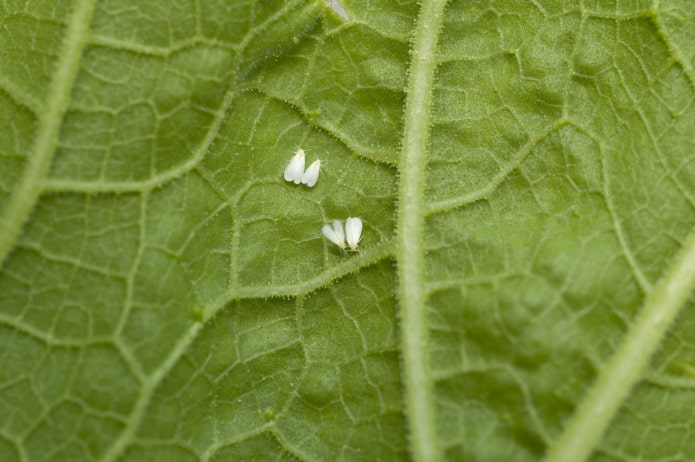
Although midges cause a lot of trouble, they are still considered one of the easiest problems to solve. Do not rush to get rid of your favorite infected flower: most likely, it will still be possible to save it.
Now reading:
- Which bathroom screen to choose? Description of types and materials.
- Chests of drawers for the living room: design ideas and photos in the interior of your home
- Ceiling in the children’s room: 75 photos of interiors, ideas for girls and boys.
- tips for budget-friendly bathroom renovations that will make your bathroom look stylish.
- Boho Interior Design: 58 Inspiring Photos and Recommendations